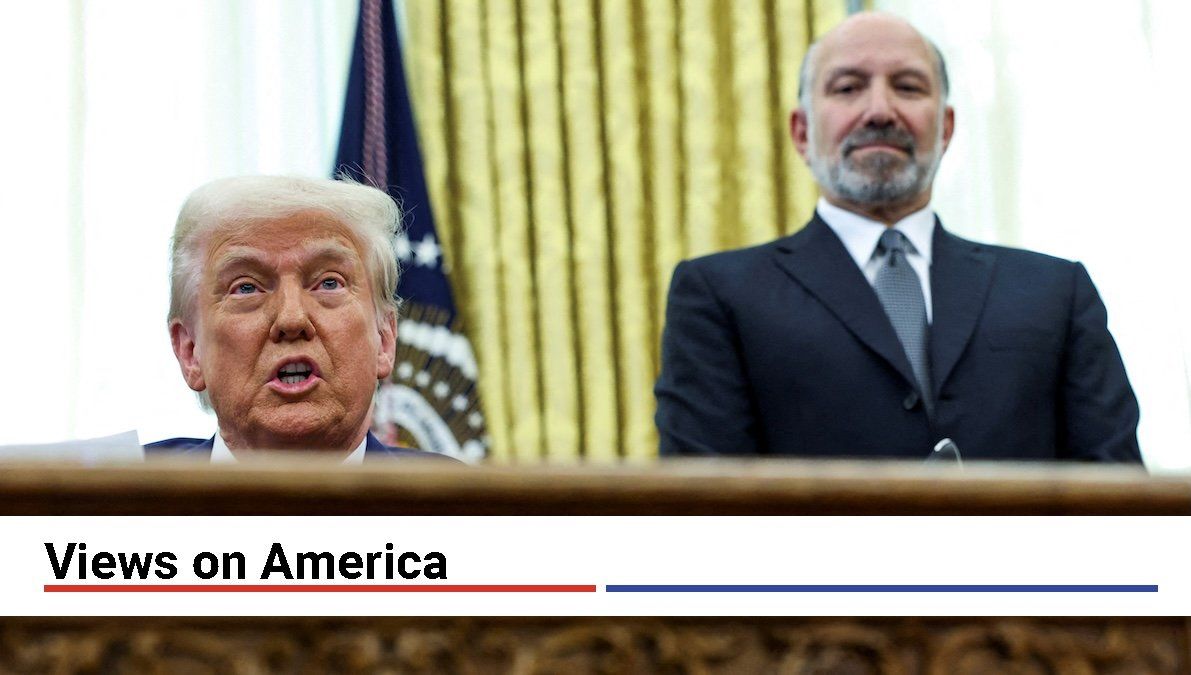Now in its third month, Trump 2.0 has sustained a breakneck pace. In recent days, the administration announced 25% tariffs on automobiles, conceived of secondary tariffs for nations buying oil from Venezuela (and potentially Russia and Iran), and reiterated its interest in “getting” Greenland.
Market participants have held their breath for Wednesday – “Liberation Day” – as the administration is set to unveil global tariffs, the lynchpin of its America First trade policy.
As the zone has flooded, predicting the current administration’s next moves has become an Olympic-level sport. Details of a group chat between senior administration officials that leaked last week – the so-called Houthi PC small group – provide allies, adversaries, and watchers with revealing insights into the administration’s foreign policy blueprint.
Reestablishing deterrence
While campaigning, President Donald Trump was fond of saying that no wars broke out during his presidency and that the conflicts in Ukraine and Israel-Gaza would never have happened if he had been president. In the run-up to his inauguration, Trump promised to end the war in Ukraine on his first day in office (later extended to within six months). On Gaza, Trump posted on social media that Hamas would have “all hell to pay” if they did not release Israeli hostages before he was sworn in.
Whether the administration was prepared to back up these threats with action hung as a giant question mark. During his first term, Trump largely avoided large-scale security operations. The major exception was the January 2020 assassination of Qasem Soleimani, commander of Iran’s Quds Force. This time, the risk of threatening “all hell” is that to establish credibility, you may have to administer “all hell.”
On March 15, the US military began conducting a series of air strikes on Iran-backed Houthi militants in Yemen – the operation at the heart of the group chat.
Exchanges in the chat tell us this use of force was strategic by design.According to the transcript, after Vice President JD Vance shared concerns about conducting the attacks, Secretary of Defense Pete Hegseth countered, “We are prepared to execute, and if I had final go or no go vote, I believe we should. This is not about the Houthis. I see it as two things: 1) Restoring Freedom of Navigation, a core national interest; and 2) Reestablish deterrence, which Biden cratered.” The message is clear: this is not about the Houthis; this is about the Trump 2.0 administration telegraphing its willingness to carry out “all hell.” TheUS has reportedly deployed B-2 bombers and cargo planes to the region as a further indicator of the administration’s apparent willingness to conduct additional strikes.
A ledger of allies
Hegseth’s remarks also reveal another principle of the Trump 2.0 foreign policy: Isolationism is dead, long live America First. During the first Trump administration, there was a sense that the president’s focus on rebuilding manufacturing jobs and tightening immigration meant that the US was taking its ball and going home. Now, Trump and his team are scanning the horizon, looking for angles, and from Greenland to Canada to Venezuela and Yemen,no stone is being left uncovered.
Since Oct. 7, 2023, Houthi militants have targeted shipping assets traversing the Red Sea, depressing trade through the channel and setting off a global rerouting of trade. Trump ordered the sea lanes reopened. As laid out in the group chat, the administration sees it as the US's role and a core national interest to restore freedom of navigation. In fact, according to Hegseth, “VP: I fully share your loathing of European free-loading. It’s PATHETIC. But [US National Security Advisor Mike Waltz] is correct, we are the only ones on the planet (on our side of the ledger) who can do this. Nobody else even close.”
Much has been made of the anti-Europe tone of the conversation. Anyone sitting in European capitals will certainly be disappointed by the language and accompanying content that the US will be looking to Europe to foot its security bill. But anyone sitting in European capitals hopefully already knows to expect this. That Trump (like President Barack Obama before him and President Joe Biden after him) wants to see Europe pay more for its collective defense is not new or news. What should, however, buoy Europe is that the US still counts itself on the same side of the ledger as its Western allies and that it feels a responsibility – a unique responsibility – toward them. This is not a case of the US pulling up the drawbridge. This is a US administration taking aim and looking for others to help settle the bill.
There can be no doubt that following the daily turns of the US administration can leave the rest of the world gasping for air. In his second term, Trump’s true north is legacy – perhaps even athird term. Through a relentless drive on tariffs, secondary tariffs, sanctions, export controls, and other measures, he is further aligning national security and economic security toward an ambition of bringing revenue and investment back to the US. This is a years-long project, beginning on Liberation Day, and no three-month period can definitively judge its outcome. The administration initiated the Houthi operation to backstop its economic policy prong with a hard-power policy prong. Going forward, when threats of a “bad situation” or of bombing Iran are made unless a deal is struck, they will carry weight.
Still, Trump hopes that his “proudest legacy will be that of a peacemaker and unifier.” The US is not leaving the world alone, for better or for worse.
Lindsay Newman is a geopolitical risk expert and columnist for GZERO.
